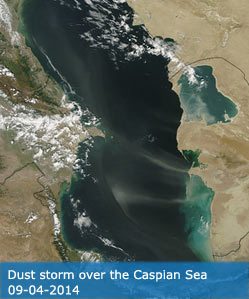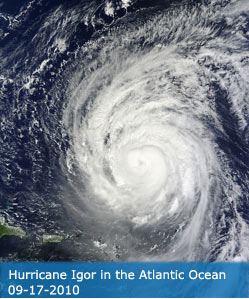Images
April 21, 2016 - Northeastern United States and Canada
Tweet
During the first half of April 2016, winter weather returned to the northeastern United States as a polar vortex dropped southward, bringing frigid air and snow to much of the region. According to Accuweather, the cold air and fresh snowpack caused some locations to set new record low temperatures and snowfall records during early April. Worcester, Massachusetts recorded 5.7 inches (14.5 centimeters) of snow on April 4, breaking a 2.1 inch (5.3 centimeter) record set in 1911, and on April 5 that city's temperature dropped to 22˚F (-5.6˚C), substantially colder than the 31˚F (-0.6˚C) previous low for that day. On that same day, North Adams, Massachusetts hit a frigid 8˚F (-13.3˚C).
The winter of 2015-2016 was an atypical one for the northeastern United States. Driven by a strong El Nino, snow began to fall very late in most locations and, aside from a record-breaking, intense winter storm in January, snowfall was scant. On Christmas Day (December 25, 2015) temperatures in the Washington, D.C. metro area hovered near 75˚F (23.9˚C), prompting residents to turn on air conditioning instead of burning a traditional Yuletide fire. Albany, New York, was one of the places logging record-low snowfalls this winter, with only 16.9 inches (43 centimeters), when a more typical winter (December - March) averages about 54 inches (137 centimeters) of snow.
The Moderate Resolution Imaging Spectroradiometer (MODIS) aboard NASA's Aqua satellite captured this true-color image on April 15, 2016. The states in the southern section of the image are showing only a little spring greening, with the typical tans of winter still evident. Fresh snow can be seen along the St. Lawrence River in Canada, and across southern Maine, Vermont, New Hampshire, and northern New York.
Image Facts
Satellite:
Aqua
Date Acquired: 4/15/2016
Resolutions:
1km (131.4 KB), 500m (309.9 KB), 250m (916.5 KB)
Bands Used: 1,4,3
Image Credit:
Jeff Schmaltz, MODIS Land Rapid Response Team, NASA GSFC
Tweet
During the first half of April 2016, winter weather returned to the northeastern United States as a polar vortex dropped southward, bringing frigid air and snow to much of the region. According to Accuweather, the cold air and fresh snowpack caused some locations to set new record low temperatures and snowfall records during early April. Worcester, Massachusetts recorded 5.7 inches (14.5 centimeters) of snow on April 4, breaking a 2.1 inch (5.3 centimeter) record set in 1911, and on April 5 that city's temperature dropped to 22˚F (-5.6˚C), substantially colder than the 31˚F (-0.6˚C) previous low for that day. On that same day, North Adams, Massachusetts hit a frigid 8˚F (-13.3˚C).
The winter of 2015-2016 was an atypical one for the northeastern United States. Driven by a strong El Nino, snow began to fall very late in most locations and, aside from a record-breaking, intense winter storm in January, snowfall was scant. On Christmas Day (December 25, 2015) temperatures in the Washington, D.C. metro area hovered near 75˚F (23.9˚C), prompting residents to turn on air conditioning instead of burning a traditional Yuletide fire. Albany, New York, was one of the places logging record-low snowfalls this winter, with only 16.9 inches (43 centimeters), when a more typical winter (December - March) averages about 54 inches (137 centimeters) of snow.
The Moderate Resolution Imaging Spectroradiometer (MODIS) aboard NASA's Aqua satellite captured this true-color image on April 15, 2016. The states in the southern section of the image are showing only a little spring greening, with the typical tans of winter still evident. Fresh snow can be seen along the St. Lawrence River in Canada, and across southern Maine, Vermont, New Hampshire, and northern New York.
Image Facts
Satellite:
Aqua
Date Acquired: 4/15/2016
Resolutions:
1km (131.4 KB), 500m (309.9 KB), 250m (916.5 KB)
Bands Used: 1,4,3
Image Credit:
Jeff Schmaltz, MODIS Land Rapid Response Team, NASA GSFC




